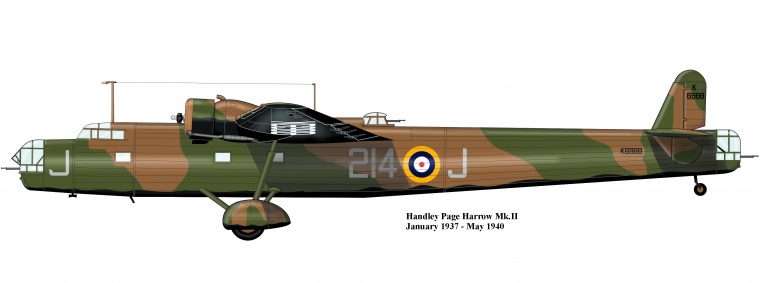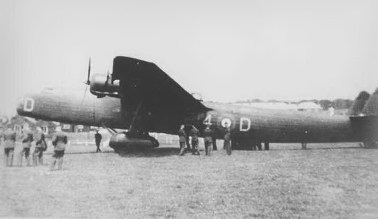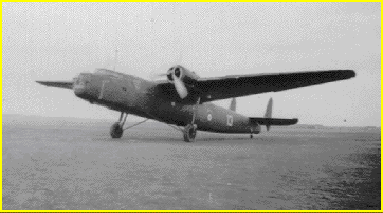Handley Page Harrow specifications and other notes
The Harrow arose out of the RAF specification B.3/34 for a monoplane bomber of twin-engine design to replace the Handley Page Heyford and the lumbering Vickers Virginia. Two companies were awarded contracts to the specification, one being Armstrong Whitworth who submitted the Whitley and the other Handley Page, whose Handley Page H.P.54 was the more traditional featuring a high wing and fixed landing gear. The Handley Page H.P.54, ie: Harrow was intended for initial use as an interim bomber trainer and to be later relegated to transport status when more advanced bombers became available. One hundred Harrows were ordered to a new specification, B.29/35, before the prototype flew on 10th October 1936. A production innovation of Handley Page Handley for the Harrow, was the manufacture of smaller components by small firms under sub-contract.
The first 39 production aircraft were designated Harrow Mk I with 850 h.p. Bristol Pegasus X engines, capable of a top speed of 190 mph (306 km/h), but the following 61 aircraft were Harrow Mk II aircraft with Pegasus XX engines of 925 h.p. giving an extra 10 mph (16 km/h). The MK I did not come with power-operated gun turrets in the nose, tail and mid-upper positions but were fitted later.
No. 214 Squadron at Feltwell was the first unit to receive Harrows, in January 1937, when the type began to replace Virginias, and by the end of that year four other squadrons had re-equipped with the new bomber: Nos 37 (Feltwell), 75 (Driffield), 115 (Marham) and 215 (Driffield). The Harrow production ceased with the 100th unit in December 1937, but aircraft remained in service throughout World War.
An interesting use of the Harrow was as an aerial minelayer when, in October 1940, No. 420 Flight was formed at Middle Wallop to carry out experiments under the codename 'Pandora'. These aircraft carried 'Long Aerial Mines' (LAMs), which consisted of many small explosive charges suspended from parachutes with a 2,000 ft (610 m) length of piano wire trailing below. It was intended they should be launched in the path of a bomber stream, and if one of these aircraft flew into the wires it was expected to release one or more of the charges, which then slid down the wires to explode on contacting the enemy bomber. Three months of trial proved the idea to be impractical, although four or five 'kills' were achieved.




